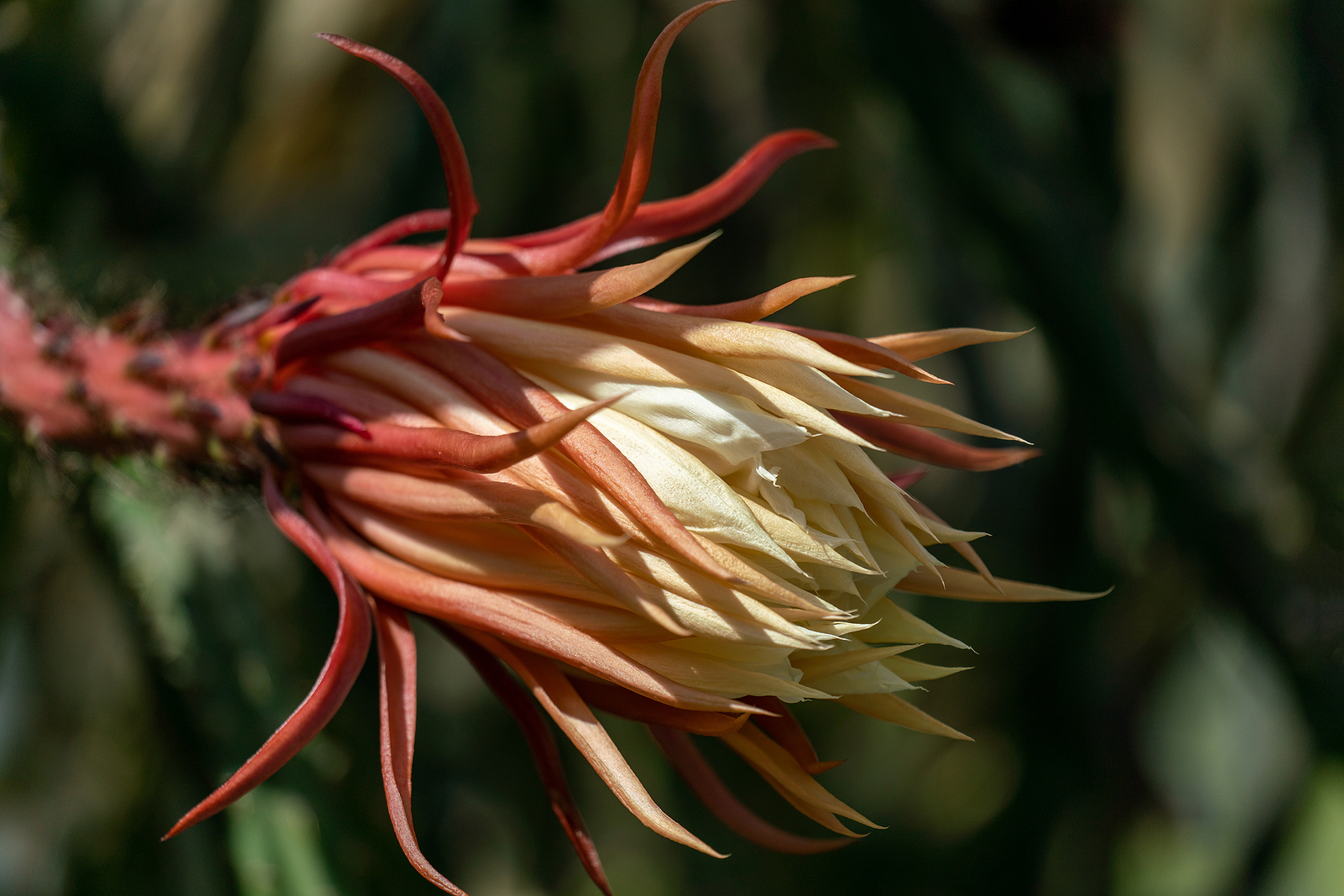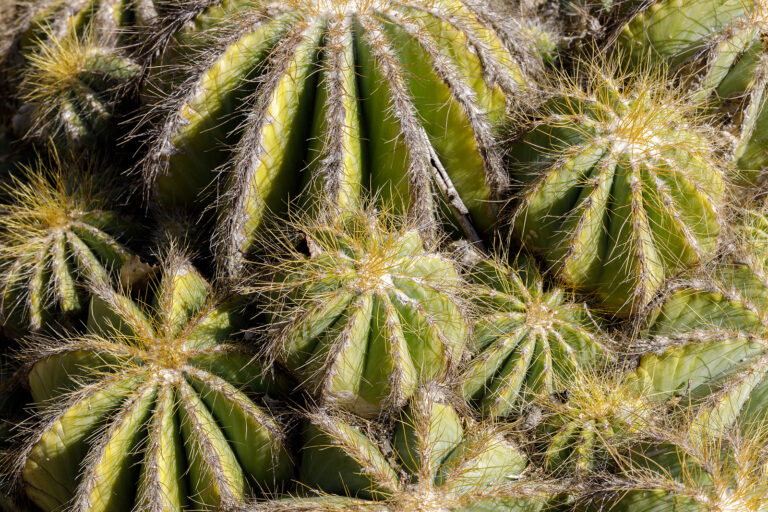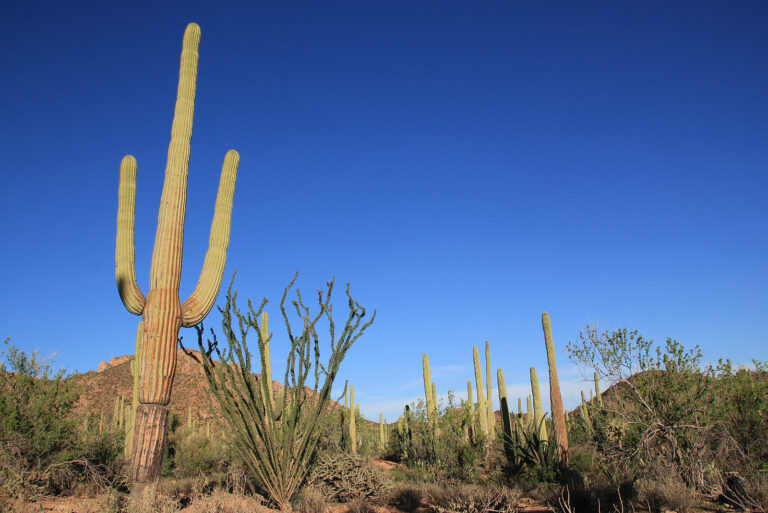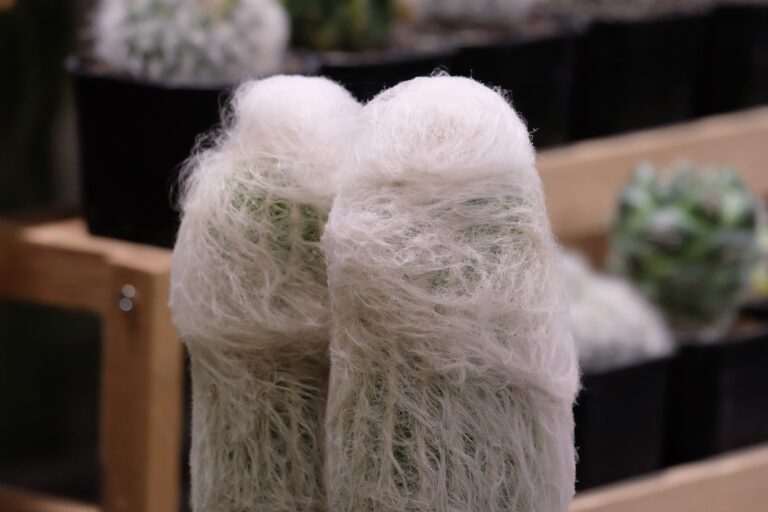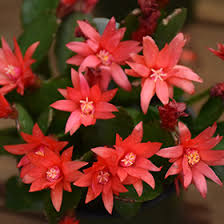How to Grow Cereus — Queen of the Night
Cereus (or Selenicereus)–commonly called Queen of the Night–are climbing cacti known for their large white night blossoms. Cereus has vine-like, spineless stems and produces super size flowers 12 inches long and 8 inches wide. The blossoms open after midnight and are usually limp and faded the following morning.
You may find Cereus under the name Serelicereus; these genus names are synonymous and interchangeable. Members of this genus are sometimes confused with members of the genus Epiphyllum.
Cereus or Selenicereus are epiphytes. They have slender sprouts that branch out and air roots that take moisture and nutrients from the air. Selenicereus have short spines, sometimes no spines at all, and low ribs. The stems grow to 15 feet long.
Cerius or Selenicereus is sometimes called moon cactus. It is native to tropical Central and South America.
Get to know Cereus – Selenicereus
- Plant type: Cactus, climbing, vinelike
- Hardiness temperature: 40℉ (4.4℃)
- Shape and size: Dull green, almost spineless stems produce a vinelike growth to 15 feet long
- Flowers: Super-sized, white flowers are 12 inches long and 8 inches across; they open at night are fade away by the morning
- Bloom time: Summer
- Common name: Queen of the night, moon cactus
- Genus name: Selenicereus
- Family name: Cactaceae
- Origin: Tropical Central and South America
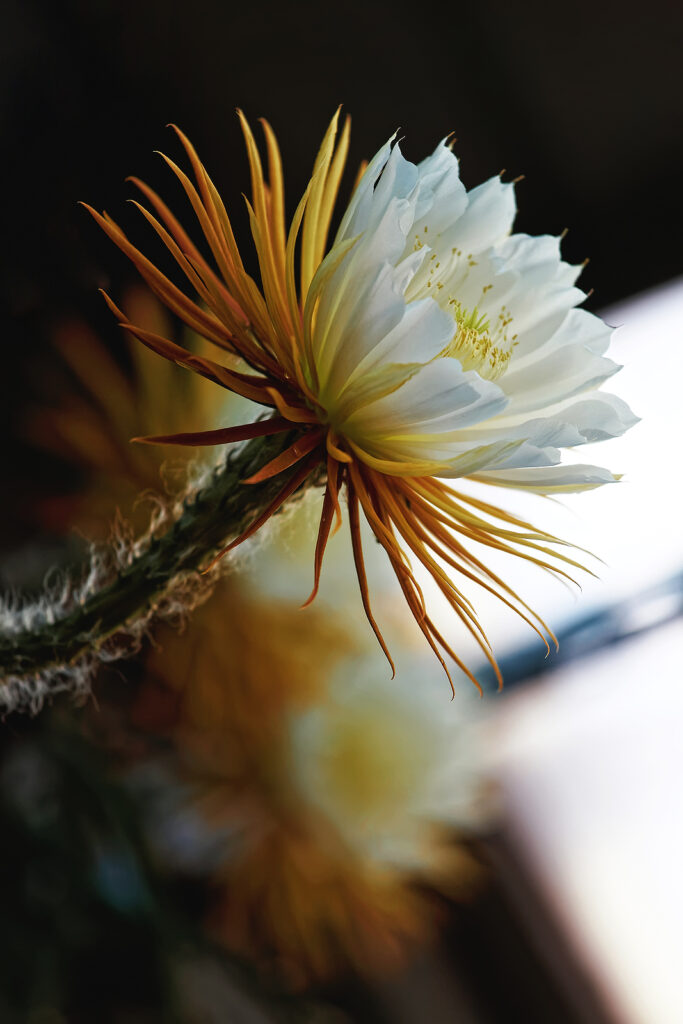
Planting Cereus – Selenicereus
- Grow Selenicereus in humus-rich, well-drained soil.
- A soil that is a mix of peat, loam, sand, perlite, and ground charcoal is best.
- Grow Selenicereus in half shade, not in full sun.
How to water and feed Cereus – Selenicereus
- Keep Selenicereus well-watered during the summer growing season; keep the soil moist.
- Selenicereus wants relatively dry soil in the winter.
- Feeder Selenicereus with a cactus fertilizer during the growing season.
Cereus – Selenicereus care
- Selenicereus needs strong support to grow on; a trellis or posts or fence.
- Keep Selenicereus at about 50℉ (10℃) during the winter; this will promote blooming the next summer.
- Propagate Selenicereus by seed or cuttings.
Cereus – Selenicereus species to grow
The genus name Cereus and Selenicereus are synonymous and interchangeable.
- Selenicerus grandiflorus (queen of the night). Slender sprouted epiphyte; yellow flowers up to 12 inches long and 8 inches wide open for only one night; blossoms are vanilla scented.
- S. macdonaldae (queen of night). Yellowish-white flowers to 12 inches long grow from 5-angled stems.
- S. pteranthus (princess of the night). Flowers smaller than the queen of the night (S. macdonaldiae) with no scent but just as pretty.
Cereus frequently asked questions
Q: What will help night-blooming cereus bloom and keep the buds from dropping off?
A: Good culture, good light, suitable soil, proper temperature. Give the plant ample water and fertilizer when it is growing and little water and fertilizer during the rest period. In winter keep the plant at 45℉ to 50℉ in good light. When the temperatures are warmer, the plant needs more water.
Q: When do night-blooming cereus bloom?
A: Summer.
Q: My 2-year-old night-blooming cereus is not blooming. What’s wrong?
A: Young plant bloom either irregularly or not at all, especially when they are growing vigorously. The plant will probably bloom when it is older. Avoid overfeeding the plant. Avoid placing it in a pot too large for the roots.
Q: How long does it take for night-blooming cereus to bloom? I started this plant from a cutting.
A: It usually takes several years.
Q: When is the best time to repot night-blooming cereus?
A: Repot night-blooming cereus in mid to late spring.
Q: How can I propagate night-blooming cereus?
A: Take stem cuttings in summer–about 6 to 12 inches long–and set them in clean sand which is kept moist. The cuttings will form new roots.

